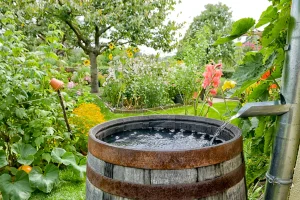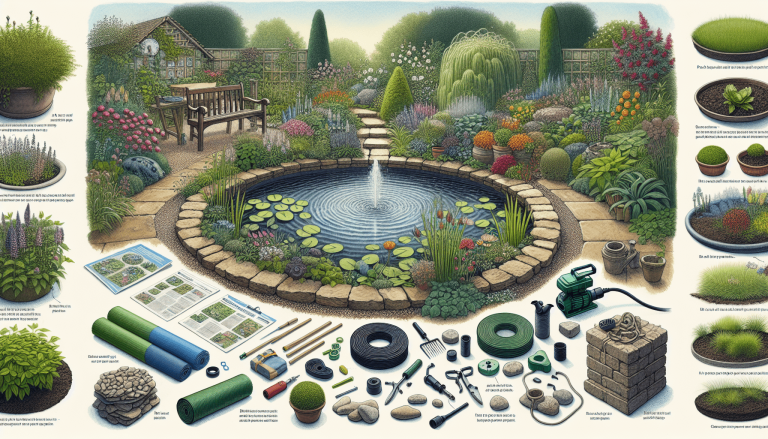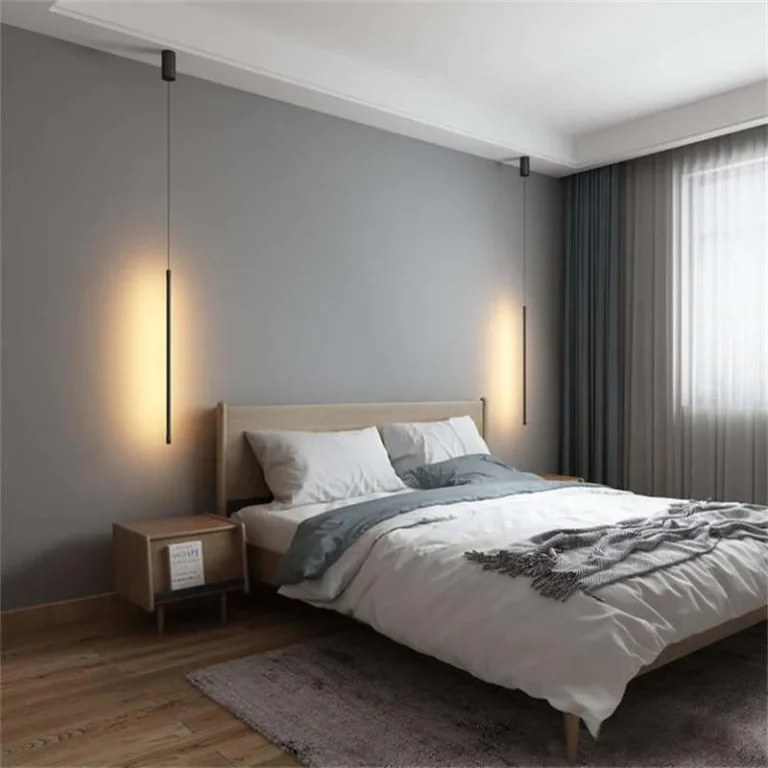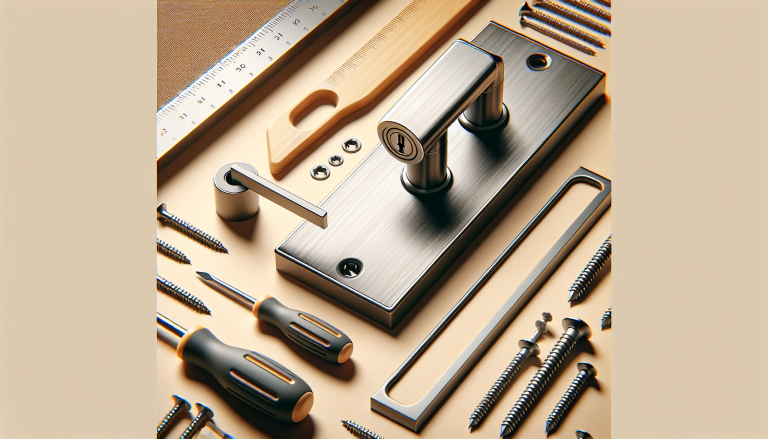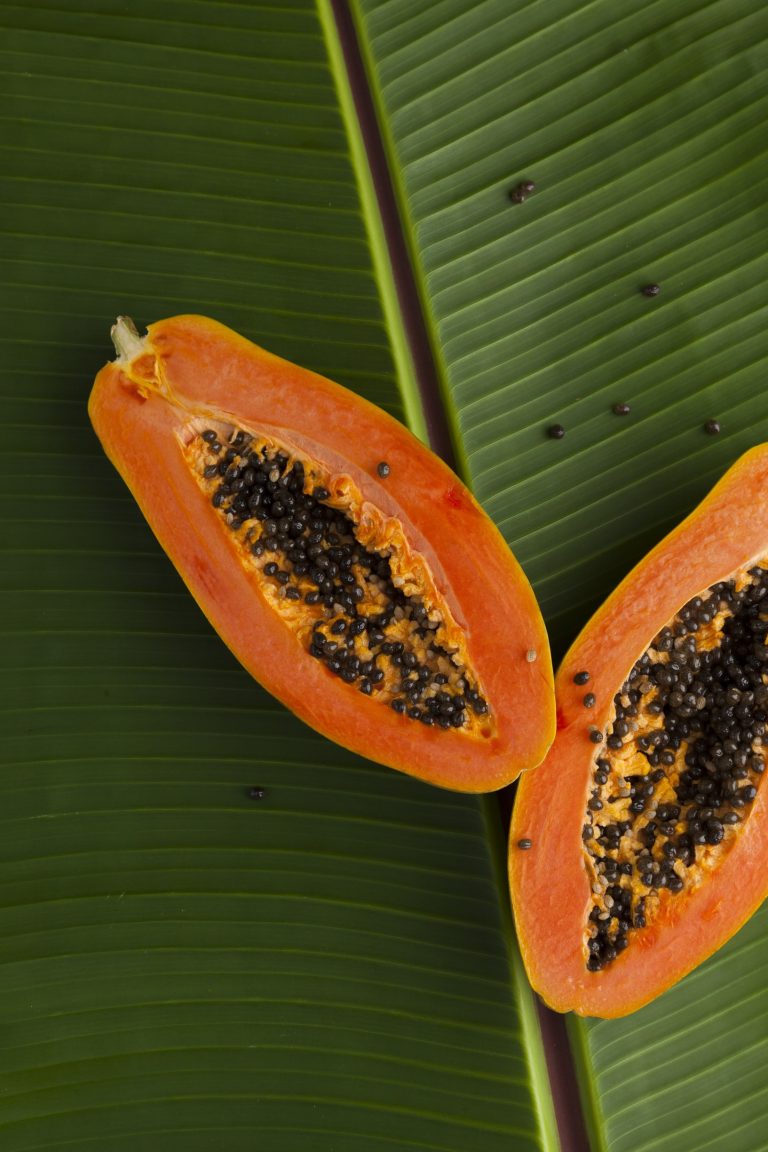If you’re looking for ways to make your home more sustainable and environmentally friendly, you’ve come to the right place! In this article, we will explore some creative and practical eco-friendly DIY home improvement ideas that you can easily implement. From upcycling old furniture to creating your own natural cleaning products, get ready to transform your living space into an eco-conscious oasis. Let’s get started! When it comes to making your home more eco-friendly, there are many DIY home improvement ideas that you can implement. These ideas not only help to reduce your carbon footprint but also can save you money in the long run. From energy-efficient lighting to sustainable gardening practices, there are various ways to make your home more eco-friendly. In this article, we will explore ten different eco-friendly DIY home improvement ideas that you can easily implement in your own home.
Table of Contents
Toggle1. Energy-efficient lighting
One of the simplest ways to make your home more eco-friendly is by switching to LED bulbs. LED bulbs are much more energy-efficient compared to traditional incandescent bulbs, which means they consume less electricity and last longer. By replacing your old bulbs with LED bulbs, you can significantly reduce your energy consumption and ultimately lower your energy bills.
In addition to using LED bulbs, you can also consider installing skylights or solar tubes to maximize the use of natural light. Skylights and solar tubes allow natural light to filter into your home, reducing the need for artificial lighting during the day. By effectively using natural light, you can further reduce your energy consumption and create a brighter and more inviting living space.
2. Water-saving fixtures
Conserving water is another important aspect of creating an eco-friendly home. By installing water-saving fixtures, you can reduce your water usage and contribute to water conservation efforts. Start by installing low-flow showerheads, which restrict the flow of water without compromising the shower experience. These showerheads can significantly reduce the amount of water used during each shower, resulting in water savings over time.
You can also use aerators on faucets to reduce water usage. Aerators mix air with water, reducing the amount of water flow while maintaining adequate water pressure. This simple upgrade can reduce water usage without sacrificing functionality. Additionally, consider upgrading to dual-flush toilets, which allow you to choose between a low-water flush for liquid waste and a higher-water flush for solid waste.
To further reduce your reliance on tap water, collect rainwater for watering your plants. Install rain barrels to capture rainwater from your roof, and use this collected water for irrigating your garden or indoor plants. This not only helps to conserve water but also reduces the strain on your local water supply.
3. Eco-friendly flooring options
Choosing eco-friendly flooring options is an excellent way to make a sustainable change in your home. Bamboo flooring is a popular choice, as it is known for its rapid growth and renewability. Bamboo is a fast-growing grass that can be harvested in just a few years, making it a sustainable alternative to hardwood flooring. It is also durable and aesthetically pleasing, making it a great addition to any room.
Cork flooring is another eco-friendly option, as it is made from the bark of the cork oak tree. The bark naturally regenerates, allowing for sustainable harvesting. Cork flooring is known for its durability, noise reduction properties, and natural resistance to mold and mildew.
Using reclaimed wood is another way to incorporate eco-friendly flooring into your home. Reclaimed wood is sourced from old buildings, barns, or even wine barrels, giving it a unique and rustic appeal. By repurposing old wood, you not only save trees but also add character and charm to your home.
If you prefer carpet, consider installing recycled carpet tiles. These tiles are made from recycled materials such as plastic bottles or reclaimed carpet fibers. They are easy to install, durable, and can be replaced individually if any damage occurs.
4. Upcycling furniture and décor
Instead of buying new furniture and décor items, consider upcycling or repurposing old ones. By giving new life to old pieces, you not only reduce waste but also add a personal touch to your home. Repurposing old furniture can be as simple as giving it a fresh coat of paint or reupholstering it with new fabric. This helps to update the look of the piece while saving it from ending up in a landfill.
Another option is to refinish wooden pieces. By sanding off the old finish and applying a new one, you can restore the beauty of the wood. This is a great way to breathe new life into old chairs, tables, or cabinets.
Using reclaimed materials for furniture and décor is another eco-friendly option. Look for reclaimed wood, metal, or other materials to create unique and sustainable pieces. These materials often have a history and can bring character to your home.
5. Insulation upgrades
Proper insulation is crucial for maintaining a comfortable temperature in your home and reducing energy consumption. By adding weatherstripping to windows and doors, you can prevent drafts and minimize heat loss during the winter months. This can make your home more energy-efficient and reduce your heating costs.
In addition to weatherstripping, consider insulating your walls and attics. Insulation helps to regulate the temperature in your home by preventing heat transfer between the inside and outside. This can result in significant energy savings, as your heating and cooling systems won’t have to work as hard to maintain a comfortable temperature.
Sealing air leaks is another important step in ensuring your home is well-insulated. Look for gaps or cracks around windows, doors, and vents, and use caulk or weatherstripping to seal them. This prevents conditioned air from escaping and outside air from entering your home, ultimately reducing the need for heating or cooling.
If you want to add an extra layer of insulation to your windows, consider installing insulated curtains or blinds. These window coverings have a thermal lining that helps to block out cold drafts during the winter and keep your home cooler during the summer. They can also provide added privacy and light control.
6. Natural cleaning products
Creating a healthier and more eco-friendly home environment can also be achieved through the use of natural cleaning products. Many commercial cleaning products contain harsh chemicals that can be harmful to both the environment and your health. By making your own non-toxic cleaners, you can reduce your exposure to these chemicals and minimize your impact on the environment.
Simple ingredients such as vinegar and baking soda can be used for various cleaning tasks. Vinegar is a natural disinfectant and can be used to clean surfaces, remove stains, and even freshen up laundry. Baking soda, on the other hand, is a versatile cleaner and deodorizer. It can be used to scrub sinks, clean carpets, and remove odors from fabrics.
Additionally, consider switching to eco-friendly laundry detergent. Conventional laundry detergents often contain chemicals that are harmful to aquatic life, and their packaging contributes to plastic waste. Look for laundry detergents that are biodegradable and made from plant-based ingredients. These detergents are gentle on the environment and can still effectively clean your clothes.
7. Rainwater harvesting systems
Conserving water is not only important indoors but also outdoors. Installing rainwater harvesting systems can help you utilize the natural resource of rainwater and reduce your reliance on municipal water for irrigation purposes. There are various options for rainwater harvesting that you can consider.
Installing rain barrels is a simple and effective way to collect rainwater. These barrels can be placed under downspouts to capture water from your roof. The collected rainwater can then be used for watering your garden or lawn. This helps to reduce your water usage and saves you money on your water bills.
Another option is to create a rain garden. A rain garden is a strategically designed garden that allows rainwater to be absorbed into the ground rather than running off into storm drains. By directing downspouts to the rain garden, you can ensure that rainwater is effectively utilized and contributes to the health of your plants.
Using collected rainwater for irrigation is a sustainable choice that helps to conserve water and reduce the strain on local water sources.
8. Composting and recycling
Reducing waste is a key component of living an eco-friendly lifestyle. Setting up a compost bin is a great way to reduce food waste and create nutrient-rich compost for your garden. Composting allows organic waste, such as fruit and vegetable scraps, coffee grounds, and eggshells, to break down naturally and turn into nutrient-rich soil. This can be used as a natural fertilizer for your plants, eliminating the need for chemical fertilizers.
Implementing a recycling system is another important step in reducing waste. Set up designated bins for recycling paper, plastic, glass, and metal. Make sure to check your local recycling guidelines to ensure you’re recycling properly. By recycling, you can divert materials from the landfill and contribute to the creation of new products.
To further reduce waste, repurpose glass and plastic containers instead of throwing them away. Glass jars can be used for storing food, organizing small items, or even as vases for fresh flowers. Plastic containers can be repurposed for storage or used as planters for small herbs or succulents.
9. Sustainable gardening practices
Creating an eco-friendly home extends to your outdoor space as well. Sustainable gardening practices can help support biodiversity and reduce the use of harmful chemicals and resources. Here are some tips to make your garden more sustainable.
Planting native species is an important aspect of sustainable gardening. Native plants are well-adapted to the local climate and require less maintenance and watering compared to non-native species. They also provide habitat and food sources for local wildlife, contributing to biodiversity.
Create a compost pile for organic waste from your garden and kitchen. By composting plant trimmings, leaves, and kitchen scraps, you can create nutrient-rich compost to improve soil fertility. This reduces the need for chemical fertilizers and promotes healthy plant growth.
Use organic fertilizers and pesticides to minimize the use of harmful chemicals in your garden. Organic fertilizers, such as compost or seaweed-based fertilizers, provide essential nutrients to your plants without the negative impact on the environment. When it comes to pest control, opt for natural methods like hand-picking pests or using insecticidal soaps and neem oil.
Encourage beneficial insects in your garden by planting flowers that attract pollinators and predators of garden pests. Bees, butterflies, and ladybugs are beneficial insects that help in pollination and pest control. By creating a habitat for them, you can reduce the need for chemical pesticides and create a thriving ecosystem in your garden.
10. Energy-efficient appliances
Energy-efficient appliances not only save you money on your energy bills but also reduce your overall energy consumption. When shopping for appliances, look for Energy Star-rated models. These appliances meet strict energy efficiency standards set by the Environmental Protection Agency (EPA). By choosing Energy Star-rated appliances, you can be confident that you are selecting products that are designed to minimize energy usage.
Opting for smart home technology can also contribute to energy efficiency. Smart thermostats, for example, allow you to control the temperature of your home remotely and create energy-saving schedules. This helps to optimize energy usage and reduce overall energy consumption. Similarly, smart power strips can eliminate vampire power by automatically turning off power to devices that are not in use.
Utilize energy-saving settings on your appliances. Many modern appliances, such as refrigerators and washing machines, have energy-saving modes that reduce energy consumption without compromising performance. Take advantage of these settings to further reduce your energy usage.
Monitoring your energy consumption is another important step in achieving energy efficiency. Use energy monitoring tools or smart meters to track your energy usage and identify areas where you can make improvements. This can help you understand how your choices and habits impact your energy consumption and make informed decisions to reduce your energy use.
In conclusion, there are many eco-friendly DIY home improvement ideas that you can implement to create a sustainable and energy-efficient home. From switching to LED bulbs and installing water-saving fixtures to upcycling furniture and investing in energy-efficient appliances, these ideas can help you reduce your carbon footprint and create a healthier living environment. By making small changes and adopting sustainable practices, you can make a positive impact on the environment while enjoying the benefits of a more eco-friendly home.


